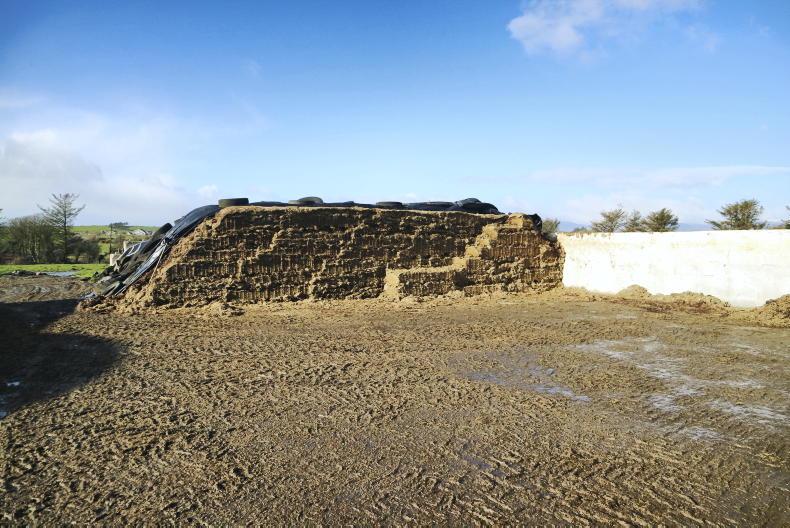To ensure the results of a silage test are reliable, accurate silage sampling is important. This should only take place at least six weeks after ensiling.
When testing silage from a pit, a long silage core sampler should be used to sample a number of points from the surface of the pit.
If the pit is open, you can take approximately 12 samples across the face of the pit in a ‘W’ shape.
Samples should not come directly from the face of the pit where it has been exposed, so dig in a few inches to take the sample.
To sample baled silage, you will need to take a sample from a number of bales from the same cut, but you should not climb on to bales to take a sample.
Separate samples should be taken for first-cut and second-cut silage.
Top tips
Mix all the samples from one cut together and take out a representative sample weighing 0.5kg which is required for lab analysis.Store the sample in a sealable bag like a plastic sandwich bag and make sure all the air is expelled from the bag before sealing it.Store in the fridge if needed, but ideally get the sample to the laboratory on the same day it is sampled.Using a permanent marker label the sample bag with your name, details of the sample and date of sampling.
To ensure the results of a silage test are reliable, accurate silage sampling is important. This should only take place at least six weeks after ensiling.
When testing silage from a pit, a long silage core sampler should be used to sample a number of points from the surface of the pit.
If the pit is open, you can take approximately 12 samples across the face of the pit in a ‘W’ shape.
Samples should not come directly from the face of the pit where it has been exposed, so dig in a few inches to take the sample.
To sample baled silage, you will need to take a sample from a number of bales from the same cut, but you should not climb on to bales to take a sample.
Separate samples should be taken for first-cut and second-cut silage.
Top tips
Mix all the samples from one cut together and take out a representative sample weighing 0.5kg which is required for lab analysis.Store the sample in a sealable bag like a plastic sandwich bag and make sure all the air is expelled from the bag before sealing it.Store in the fridge if needed, but ideally get the sample to the laboratory on the same day it is sampled.Using a permanent marker label the sample bag with your name, details of the sample and date of sampling.






 This is a subscriber-only article
This is a subscriber-only article










SHARING OPTIONS: